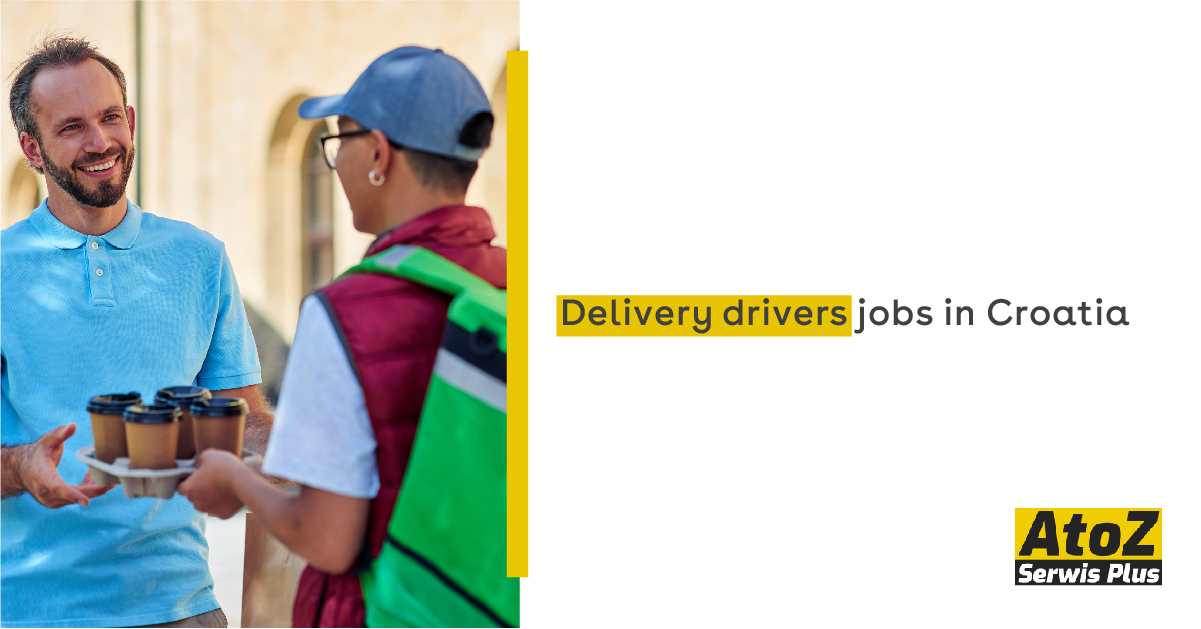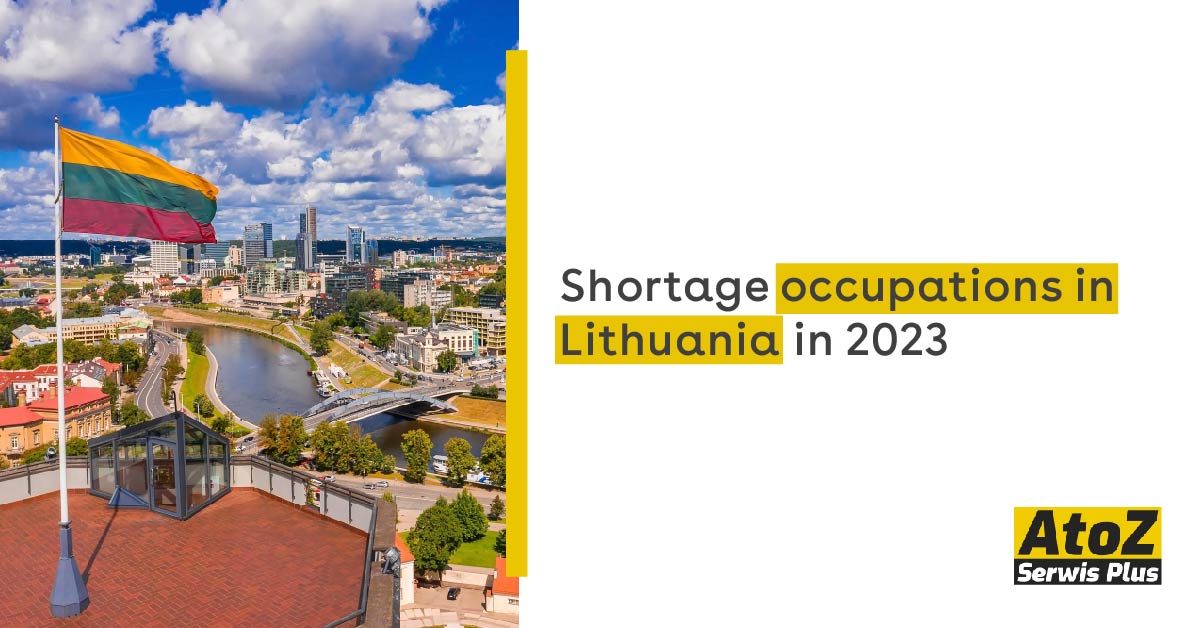

Truck Driver Shortage in Lithuania: Jobs, Salary and License Requirements
Are you seeking a career with high demand, competitive pay, and the freedom of the open road? Look no further than truck driving in Lithuania! The Baltic nation is grappling with a significant shortage of skilled drivers, creating a golden opportunity for those willing to take the wheel.
Imagine cruising through Lithuania's picturesque landscapes while earning a lucrative salary and enjoying job security. But before you hit the gas, it's crucial to understand the ins and outs of this booming industry. There's much to consider, from license requirements to truckers' challenges. In this post, we'll dive deep into the world of truck driving in Lithuania, exploring the current driver shortage, job prospects, salary packages, and essential qualifications. Buckle up as we navigate the five key aspects that every aspiring truck driver should know before embarking on this exciting career path!
Current State of Truck Driver Shortage in Lithuania
Key statistics on driver shortage
The truck driver shortage in Lithuania has reached critical levels, impacting the country's logistics sector significantly. Recent data shows:
- Shortage of 20,000 truck drivers in Lithuania as of 2023
- 15% annual increase in unfilled truck driver positions
- 40% of trucking companies reporting difficulty in hiring qualified drivers
These numbers highlight the severity of the situation and its potential to hinder economic growth.
Impact on Lithuanian economy
The shortage of truck drivers has far-reaching consequences for Lithuania's economy:
|
Economic Aspect |
Impact |
|---|---|
|
GDP Growth |
Reduced by 0.5-1% annually |
|
Export Delays |
Increased by 30% |
|
Logistics Costs |
Up by 15-20% |
|
Supply Chain Disruptions |
Affecting 60% of businesses |
These impacts underscore the crucial role of truck drivers in maintaining a robust economy and efficient supply chains.
Comparison with other EU countries
Lithuania's truck driver shortage is part of a broader European trend, but with some unique characteristics:
- Lithuania has the highest percentage of unfilled truck driver positions in the EU
- The shortage is growing faster in Lithuania compared to neighboring countries
- Eastern European countries generally face more severe shortages than Western European nations
Factors contributing to Lithuania's pronounced shortage include:
- Rapid economic growth outpacing driver training programs
- Aging workforce with inadequate replacement rates
- Competitive job markets in other EU countries attracting Lithuanian drivers
These comparisons highlight the urgency for Lithuania to address its truck driver shortage to maintain its competitive edge in the European logistics sector.
Lucrative Job Opportunities for Truck Drivers
Types of trucking jobs available
The trucking industry in Lithuania offers a diverse range of job opportunities for drivers. Here are some of the most common types:
- Long-haul drivers
- Regional drivers
- Local delivery drivers
- Specialized cargo transporters
- Tanker truck drivers
|
Job Type |
Description |
Key Requirements |
|---|---|---|
|
Long-haul |
Cross-country or international routes |
Extended periods away from home, CDL |
|
Regional |
Within Lithuania or neighboring countries |
Regular home time, CDL |
|
Local delivery |
Within city limits or nearby areas |
Good navigational skills, CDL |
|
Specialized cargo |
Hazardous materials, oversized loads |
Additional certifications, experience |
|
Tanker truck |
Liquid or gas transportation |
Specialized training, clean driving record |
Top companies hiring in Lithuania
Several prominent logistics and transportation companies are actively seeking truck drivers in Lithuania. Some of the leading employers include:
- Girteka Logistics
- Vlantana
- Transimeksa
- Hoptransa
- DSV Transport
These companies offer competitive salaries and benefits packages to attract skilled drivers.
Growth potential in the industry
The trucking industry in Lithuania presents excellent growth opportunities for drivers. As demand increases, experienced drivers can advance to:
- Fleet managers
- Dispatchers
- Safety instructors
- Owner-operators
Benefits and perks offered by employers
To combat the truck driver shortage, Lithuanian companies are offering attractive benefits:
- Competitive base salaries
- Performance-based bonuses
- Health and life insurance
- Pension plans
- Paid time off and holidays
- Modern, well-maintained vehicles
- Ongoing training and skill development
With these lucrative opportunities and benefits, the trucking industry in Lithuania continues to attract new talent and address the driver shortage.
Competitive Salary Packages
Average salary for truck drivers in Lithuania
The average salary for truck drivers in Lithuania has seen a significant increase in recent years due to the growing demand. As of 2023, truck drivers in Lithuania can expect to earn between €1,500 and €2,500 per month, depending on various factors.
Factors affecting pay rates
Several factors influence the pay rates for truck drivers in Lithuania:
- Experience level
- Type of cargo transported
- Distance of routes (domestic vs. international)
- Company size and reputation
- Additional certifications or specialized skills
Comparison with other professions
When compared to other professions in Lithuania, truck driving offers competitive salaries. Here's a comparison table:
|
Profession |
Average Monthly Salary (€) |
|---|---|
|
Truck Driver |
1,500 - 2,500 |
|
Teacher |
1,200 - 1,800 |
|
Nurse |
1,000 - 1,500 |
|
Office Worker |
1,100 - 1,700 |
|
Construction Worker |
1,300 - 2,000 |
Potential for overtime and bonuses
Truck drivers in Lithuania often have opportunities to increase their earnings through:
- Overtime pay for extended hours
- Performance-based bonuses
- Incentives for safe driving records
- Additional pay for challenging routes or hazardous materials transport
These additional earnings can significantly boost a driver's total compensation package, making it an attractive career option in the Lithuanian job market. With the ongoing truck driver shortage, companies are increasingly offering competitive packages to attract and retain skilled drivers.
License Requirements for Truck Drivers
Basic qualifications needed
To become a truck driver in Lithuania, certain basic qualifications are essential:
- Minimum age of 18 (for certain vehicle categories, the age requirement may be higher)
- Valid Lithuanian driver's license (Category B)
- Clean driving record
- Physical fitness and medical clearance
- Ability to read, write, and speak Lithuanian
- Basic knowledge of English or Russian (beneficial for international routes)
Types of licenses available
Lithuania follows the European Union's harmonized license categories:
|
License Category |
Vehicle Type |
Minimum Age |
|---|---|---|
|
C1 |
Medium-sized trucks (3,500 - 7,500 kg) |
18 |
|
C |
Large goods vehicles (over 3,500 kg) |
21 |
|
CE |
Large goods vehicles with trailers |
21 |
License Requirements for Truck Drivers in Lithuania: Step-by-Step Guide
Introduction
Lithuania, as a key logistics hub in Europe, has specific legal requirements for individuals seeking a truck driving license. Whether you are a local or a foreign driver, understanding the process is essential to comply with Lithuanian and EU regulations. Below is a comprehensive step-by-step guide on how to obtain a truck driver’s license in Lithuania.
Step 1: Meet the Basic Eligibility Criteria
Before applying for a truck driver’s license, you must ensure that you meet the fundamental requirements:
- Minimum Age: 21 years old (18 for certain cases under specific EU regulations)
- Residency Status: Must be a resident of Lithuania or have legal permission to stay
- Health Requirements: Medical fitness certificate from an accredited health professional
- Valid Category B License: Mandatory before applying for a Category C (truck) or Category CE (truck with trailer) license
Step 2: Enroll in a Certified Driving School
To obtain a truck driving license in Lithuania, you must complete training at an approved driving school. The training program includes:
- Theoretical lessons on road safety, traffic laws, and vehicle maintenance
- Practical training with an instructor, covering city and highway driving
- Special training on handling cargo, maneuvering, and fuel efficiency
Step 3: Obtain a Medical and Psychological Certificate
A health check-up is mandatory to assess:
- Vision and hearing capabilities
- Physical fitness and reflexes
- Mental stability and stress management abilities
A licensed medical professional must issue the certificate, which is required for the driving test application.
Step 4: Pass the Theory Exam
The theoretical exam is conducted by Regitra, the Lithuanian vehicle registration and driver examination authority. The exam covers:
- Traffic regulations
- Safe driving practices
- EU transport laws
- Emergency response procedures
Preparation through official study materials and online practice tests is highly recommended.
Step 5: Complete Practical Training and Pass the Driving Test
After passing the theory exam, you must undergo practical training, followed by a driving test. The test consists of:
- Vehicle Inspection: Checking truck components and safety features
- Closed-Circuit Exam: Maneuvering, reversing, and parking in a controlled environment
- On-Road Test: Driving in real-world traffic conditions under examiner supervision
Passing the test qualifies you for a Category C or CE license.
Step 6: Obtain the Driver Qualification Card (Code 95)
To work as a professional truck driver in Lithuania and the EU, obtaining the Code 95 qualification is mandatory. This includes:
- 35 hours of periodic training every five years
- Certification in professional competence for goods transport
- Compliance with EU regulations for commercial truck drivers
Step 7: Apply for the Truck Driver’s License
Once you have completed all tests and training, submit your application to Regitra along with:
- Identity documents (passport or Lithuanian ID)
- Proof of residency
- Medical and psychological certificate
- Theory and practical exam certificates
- Payment for license processing fees
The license is typically issued within 10-15 business days.
Step 8: Consider Additional Certifications
To expand job opportunities, truck drivers may also consider:
- ADR Certification: Required for transporting hazardous materials
- Tachograph Training: Essential for compliance with digital and analog tachograph regulations
- Forklift or Crane License: Useful for logistics and construction industries
Why is Code 95 Certification Important?
Code 95 Certification is essential for professional drivers in the European Union (EU) who operate heavy goods vehicles (HGVs) and passenger transport vehicles. This qualification is mandated under the Driver Certificate of Professional Competence (CPC) to ensure safety, efficiency, and compliance with EU transport regulations.
Key Benefits of Code 95 Certification
- Legal Requirement – Code 95 is mandatory for commercial drivers in the EU, ensuring compliance with international road safety laws.
- Enhanced Road Safety – Training covers defensive driving, emergency response, and hazard awareness, reducing accident risks.
- Improved Career Prospects – Certified drivers are in high demand across Europe, especially in countries facing driver shortages like Germany, Poland, and the Netherlands.
- Employer Preference – Many logistics companies prioritize hiring Code 95-certified drivers, offering better salaries and job security.
- Efficiency & Fuel Savings – The course teaches eco-driving techniques, helping companies cut fuel costs and reduce carbon emissions.
Who Needs Code 95 Certification?
- Truck drivers (HGV/LGV drivers)
- Bus and coach drivers
- Transport & logistics professionals
How to Obtain Code 95 Certification?
To get a Driver CPC Code 95, drivers must complete 35 hours of periodic training every five years. The training includes practical and theoretical sessions to ensure drivers meet EU road safety and performance standards.
How to Convert a Foreign Truck Driving License to a Lithuanian License
If you are planning to work as a truck driver in Lithuania, you may need to convert your foreign truck driving license into a Lithuanian one. This guide provides a step-by-step process for exchanging your truck driving license, including key requirements and documents needed.
Who Needs to Convert Their Truck License?
- EU/EEA Citizens: If you hold a valid truck driving license from an EU or EEA country, you can drive in Lithuania without conversion. However, if you become a permanent resident, you may choose to exchange it for a Lithuanian license.
- Non-EU/EEA Citizens: If you are from a non-EU country, you are allowed to use your foreign truck driving license for up to one year after registering as a resident in Lithuania. After this period, you must exchange it for a Lithuanian truck driving license.
Requirements for Truck License Conversion
To successfully convert your foreign truck driving license, you must meet the following criteria:
- Your truck driving license must be valid and not expired.
- You must have legal residence in Lithuania.
- If your license is not in Lithuanian or English, you need an official translation.
- Some non-EU license holders may need to pass additional driving tests, especially for heavy vehicles.
Documents Needed for Truck License Exchange
To apply for a Lithuanian truck driving license conversion, gather the following documents:
- Application form – Available at the Lithuanian State Enterprise Regitra offices. (Official Regitra Website)
- Valid foreign truck driving license – Original and a certified copy.
- Official translation – If your license is not in Lithuanian or English.
- Passport or residence permit – Proof of legal residence in Lithuania.
- Medical certificate – Issued by an approved Lithuanian medical institution, confirming your fitness to drive heavy vehicles. (Health Requirements)
- Passport-sized photo – Must meet Lithuanian truck driving license standards.
- Proof of residence in Lithuania – Utility bills, rental agreement, or a bank statement.
- Professional Driver Qualification Certificate (CPC) – If applicable for your truck driving category.
- Payment receipt – A processing fee applies for the conversion.
Step-by-Step Process to Convert Your Truck License
- Visit the Regitra Office: Locate your nearest Lithuanian Regitra office where truck license exchanges are processed. (Find a Regitra Office)
- Submit Required Documents: Provide the necessary paperwork for verification.
- Pass a Driving Test (if required): Non-EU citizens from certain countries may need to take a theory and/or practical driving test specific to trucks. (Driving Test Info)
- Pass a Medical Examination: Additional health and vision tests may be required for truck drivers. (Medical Check-up Info)
- Pay the Processing Fee: Fees vary based on the application type and urgency.
- Wait for Approval: Processing times can take a few weeks, depending on document verification and test requirements.
- Collect Your Lithuanian Truck License: Once approved, you will receive your new Lithuanian truck driving license.
Driving Test Requirements for Non-EU Truck Drivers
If your home country does not have a reciprocal agreement with Lithuania, you may be required to:
- Take a theory test: Covers Lithuanian traffic laws, road signs, and driving regulations specific to trucks. (Theory Test Info)
- Pass a practical truck driving test: Evaluates your driving skills under Lithuanian road conditions, including maneuvering large vehicles and handling cargo safety regulations. (Practical Test Info)
Processing Time & Fees
- Standard processing time: 2-4 weeks
- Express service: Available for an additional fee
- Conversion fee: Varies, typically between €50-€150 (Fee Structure)
Why Convert Your Truck License?
- Avoid legal issues after one year of residency.
- Comply with Lithuanian truck driving regulations.
- Ensure eligibility for employment as a professional truck driver.
- Simplify interactions with insurance and logistics companies.
Converting your foreign truck driving license in Lithuania is a straightforward process when following the proper steps. Visit the Regitra Official Website for the latest updates and requirements. Safe driving!
Challenges and Solutions in the Trucking Industry
A. Long working hours and work-life balance
One of the biggest challenges in the trucking industry is the demanding work schedule. Truck drivers often face:
- Long hours on the road
- Irregular sleep patterns
- Limited time with family and friends
To address these issues, companies are implementing:
- Flexible scheduling options
- Home time guarantees
- Improved rest facilities at truck stops
|
Traditional Approach |
Modern Solutions |
|---|---|
|
Fixed schedules |
Flexible routing |
|
Minimal home time |
Guaranteed weekends off |
|
Basic rest areas |
Comfortable sleep pods |
B. Safety concerns and regulations
Safety is paramount in the trucking industry. Key challenges include:
- Fatigue-related accidents
- Compliance with strict regulations
- Maintaining vehicle safety standards
Solutions being implemented:
- Advanced driver assistance systems (ADAS)
- Mandatory rest periods
- Regular safety training programs
C. Technological advancements in trucking
The industry is embracing technology to overcome challenges:
- GPS tracking for efficient route planning
- Electronic logging devices (ELDs) for accurate hour tracking
- Telematics for real-time vehicle diagnostics
These advancements not only improve efficiency but also enhance safety and compliance.
D. Initiatives to attract more drivers
To combat the truck driver shortage in Lithuania, the industry is focusing on:
- Improving working conditions
- Offering competitive salaries and benefits
- Providing career advancement opportunities
- Implementing mentorship programs for new drivers
By addressing these challenges and implementing innovative solutions, the Lithuanian trucking industry is working towards creating a more attractive and sustainable profession for current and future truck drivers.
Conclusion : Lithuania's trucking industry faces a significant driver shortage, presenting both challenges and opportunities. The sector offers lucrative job prospects with competitive salary packages, making it an attractive career choice for those willing to meet the necessary license requirements. However, the industry must address various challenges to ensure long-term sustainability and growth.
For individuals considering a career in trucking, now is an opportune time to enter the field. With high demand for skilled drivers and attractive compensation, the industry provides a pathway to a stable and rewarding profession. As Lithuania continues to address the driver shortage and implement solutions, the trucking sector is poised for positive transformation, offering a promising future for both new and experienced drivers alike.
FAQs About Truck Driving in Lithuania
1. Is there a high demand for truck drivers in Lithuania?
Yes, the demand is growing due to labor shortages in the transport industry.
2. Can foreign drivers work as truck drivers in Lithuania?
Yes, many companies hire foreign drivers, particularly from non-EU countries, provided they have the necessary licenses and work permits.
3. How much does a truck driver earn in Lithuania?
Salaries range between €1,500 and €3,500 per month, depending on experience and job type.
4. What are the working hours for truck drivers?
EU regulations limit truck drivers to 56 hours per week and 90 hours over two weeks.
5. What documents are needed to work as a truck driver in Lithuania?
A valid truck driver’s license, CPC certification, work visa (for non-EU drivers), and a medical certificate.
6. Are Lithuanian truck driver salaries taxed?
Yes, salaries are subject to Lithuanian income tax laws.
7. Do I need to speak Lithuanian to work as a truck driver?
Not necessarily. English or Russian is often sufficient for communication.
8. How long does it take to get a truck driver’s license in Lithuania?
Training and licensing can take 2-6 months, depending on experience and course availability.
9. Are there training programs for aspiring truck drivers?
Yes, several certified driving schools offer C and CE category training.
10. What benefits do Lithuanian trucking companies offer?
Benefits include competitive salaries, overtime pay, accommodation assistance, and fuel cards.
11. Can I work as a truck driver in Lithuania with an international driving license?
No, you need to convert it to a Lithuanian or EU-recognized license.
12. What are the major trucking companies in Lithuania?
Companies like Girteka Logistics, Hoptrans, and Finėjas frequently hire drivers.
13. Is truck driving in Lithuania a stable career?
Yes, due to the ongoing driver shortage and growing logistics industry.
14. Do I need a visa to work as a truck driver in Lithuania?
Non-EU citizens require a work visa and residence permit.
15. How do I find truck driving jobs in Lithuania?
Online job portals, recruitment agencies, and company websites are good places to start.
16. Are truck drivers in Lithuania eligible for social benefits?
Yes, employed drivers are entitled to social security benefits, including health insurance and pensions.
17. What are the common challenges of truck driving in Lithuania?
Long hours, harsh weather conditions, and border delays.
18. Can truck drivers bring their families to Lithuania?
Yes, with a residence permit, family reunification is possible.
19. Are there any government incentives for truck drivers?
Some programs support foreign workers with licensing and relocation assistance.
20. What is the future of the trucking industry in Lithuania?
The industry is expected to grow, with increasing demand for experienced drivers.
Conclusion : With the truck driver shortage in Lithuania, opportunities in the logistics sector are abundant. Competitive salaries, job stability, and career growth make truck driving an attractive option. If you meet the qualifications and licensing requirements, Lithuania could be a promising destination for your truck driving career.


















